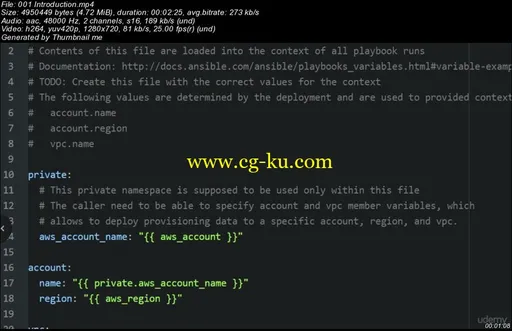
Ansible Automation For Beginners to Advance - Step by Step
MP4 | Video: AVC 1280x720 | Audio: AAC 44KHz 2ch | Duration: 4 Hours | Lec: 41 | 615 MB
Genre: eLearning | Language: English
With Ansible, Ansible AWS, Ansible Tower, Automation, Network
Mastering Ansible is a step-by-step journey of learning Ansible for configuration management and orchestration.
This Course is Designed by a software Engineer who has 5+ Total IT Experience and he work a lot of Devops Related Industry Oriented Projects. So what the Knowledge you are getting from the course it totally valuable if you want to learn Devops with Ansible.
this course is Hands on…Less Theory and More Practical that you able to get the hands on Level of Experience!
After each and every video we provide you some home assignment and also some Study materials. Hope that will help you to learn the Subject from the very Basics!
……………………………………………………………………………………………………………………………….
In a previous guide, we discussed how to install the Ansible software and learn basic commands. In this guide, we will discuss Ansible playbooks, which are Ansible's way of creating automated scripts to configure client computers.
We will assume that you have a configured Ansible server and a few clients, just as we left off in the last tutorial. In our guide, the server is a Ubuntu 12.04 machine, and the clients that we are going to be configuring are also Ubuntu 12.04 machines, for ease of explanation.
What are Ansible Playbooks?
Ansible playbooks are a way to send commands to remote computers in a scripted way. Instead of using Ansible commands individually to remotely configure computers from the command line, you can configure entire complex environments by passing a script to one or more systems.
Ansible playbooks are written in the YAML data serialization format. If you don't know what a data serialization format is, think of it as a way to translate a programmatic data structure (lists, arrays, dictionaries, etc) into a format that can be easily stored to disk. The file can then be used to recreate the structure at a later point. JSON is another popular data serialization format, but YAML is much easier to read.
Each playbook contains one or more plays, which map hosts to a certain function. Ansible does this through something called tasks, which are basically module calls.



发布日期: 2018-01-18